
Summary and links to further reading about Connecticut's constitutions
- Subject:
- English Language Arts
- History
- Social Science
- Material Type:
- Module
- Student Guide
- Provider:
- Connecticut Explored
- Author:
- various
- Date Added:
- 07/29/2021

Summary and links to further reading about Connecticut's constitutions

Summary and links to further reading about Connecticut's role in the Civil War
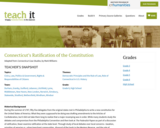
Uses primary sources to explore the impacts World War I had on the struggle for civil rights in Connecticut and America.

What you say, and how you say it, often depends on whom you're talking to, both in person and online. The person or people you're chatting with -- and the apps or websites you're using -- affect how we communicate. Remind your students to consider their audience before they post or comment online, and help them build community and communicate effectively in the digital world.
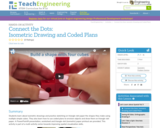
Students learn about isometric drawings and practice sketching on triangle-dot paper the shapes they make using multiple simple cubes. They also learn how to use coded plans to envision objects and draw them on triangle-dot paper. A PowerPoint® presentation, worksheet and triangle-dot (isometric) paper printout are provided. This activity is part of a multi-activity series towards improving spatial visualization skills.
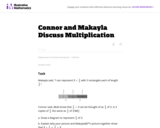
The purpose of this task is to have students think about the meaning of multiplying a number by a fraction, and to use this understanding of fraction multiplication to make sense of the commutative property of multiplication in the case of fractions.
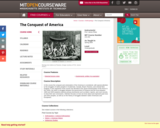
In this course the conquest and colonization of the Americas is considered, with special attention to the struggles of native peoples in Guatemala, Canada, Brazil, Panama, and colonial New England. In two segments of the course-one devoted to the Jesuit missionization of the Huron in the 1630s, the other to struggles between the government of Panama and the Kuna between 1900 and 1925-students examine primary documents such as letters, reports, and court records, to draw their own conclusions. Attention focuses on how we know about and represent past eras and other peoples, as well as on the history of struggles between native Americans and Europeans.
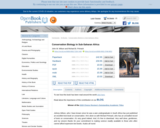
Conservation Biology in Sub-Saharan Africa comprehensively explores the challenges and potential solutions to key conservation issues in Sub-Saharan Africa.
Easy to read, this lucid and accessible textbook includes fifteen chapters that cover a full range of conservation topics, including threats to biodiversity, environmental laws, and protected areas management, as well as related topics such as sustainability, poverty, and human-wildlife conflict. This rich resource also includes a background discussion of what conservation biology is, a wide range of theoretical approaches to the subject, and concrete examples of conservation practice in specific African contexts. Strategies are outlined to protect biodiversity whilst promoting economic development in the region.
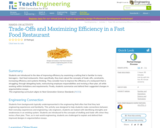
Students are introduced to the idea of improving efficiency by examining a setting that is familiar to many teenagers fast food restaurants. More specifically, they learn about the concepts of trade-offs, constraints, increasing efficiency and systems thinking. They consider how to improve efficiency in a struggling restaurant through delegating tasks, restructuring employee responsibilities and revising a floor plan, all while working within limitations and requirements. Finally, students summarize and defend their suggested changes in argumentative essays.
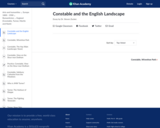
This art history video discussion examines John Constable"s "The Hay Wain", 1821. Oil on canvas, 51 1/4" x 73" (130.2 x 185.4 cm) (The National Gallery, London).
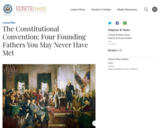
Witness the unfolding drama of the Constitutional Convention and the contributions of those whom we have come to know as the Founding Fathers. In this lesson, students will become familiar with four important, but relatively unknown, contributors to the U.S. Constitution Convention: Oliver Ellsworth, Alexander Hamilton, William Paterson, and Edmund Randolph.

To what shared principles did the Founding Fathers appeal as they struggled to reach a compromise in the Constitutional Convention? In this lesson, students will learn how the Founding Fathers debated then resolved their differences in the Constitution. Learn through their own words how the Founding Fathers created"a model of cooperative statesmanship and the art of compromise."
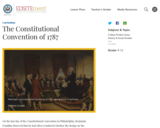
The delegates at the 1787 Convention faced a challenge as arduous as those who worked throughout the 1780s to initiate reforms to the American political system. In this unit, students will examine the roles that key American founders played in creating the Constitution, and the challenges they faced in the process.

Students use simple household materials, such as PVC piping and compact mirrors, to construct models of laser-based security systems. The protected object (a "mummified troll" or another treasure of your choosing) is placed "on display" in the center of the modeled room and protected by a laser system that utilizes a laser beam reflected off mirrors to trigger a light trip sensor with alarm.
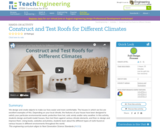
We design and create objects to make our lives easier and more comfortable. The houses in which we live are excellent examples of this. Depending on your local climate, the features of your house have been designed to satisfy your particular environmental needs: protection from hot, cold, windy and/or rainy weather. In this activity, students design and build model houses, then test them against various climate elements, and then re-design and improve them. Using books, websites and photos, students learn about the different types of roofs found on various houses in different environments throughout the world.

Is the food chain shown above accurate? Does the first link depict a producer, the second link a herbivore, and the third link an omnivore / carnivore? Students must correctly determine whether a species is a producer or consumer, and what type of consumer; herbivore, omnivore, or carnivore. Students are provided with a list of Sonoran Desert species and asked to construct, within their groups, several food chains. These food chains are then be used to construct a food web. In order to complete this activity, students must first research the individual species to understand their feeding habits.

Students work in pairs to create three simple types of model bridges (beam, arch, suspension). They observe quantitatively how the bridges work under load and why engineers use different types of bridges for different places. They also get an idea of the parts needed to build bridges, and their functions. The strength of model bridges is mainly a factor of the quality of materials used, and therefore they do not provide a clear visual representation of tension and compression forces involved. Yet, students are able to see these forces at work in three prototype designs and draw conclusions about their dependence on span, width and supporting structures of the bridge designs.
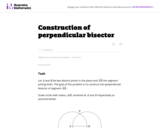
The construction of the perpendicular bisector of a line segment is one of the most common in plane geometry and it is undertaken here. In addition to giving students a chance to work with straightedge and compass, the problem uses triangle congruence both to show that the constructed line is perpendicular to AB and to show that it bisects AB.
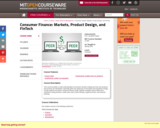
This course provides a solid understanding of consumer decision-making and how new products and services are developed, especially given the rapid pace of innovation and regulatory change, to help students succeed in consumer finance today. Specific examples will be drawn from retirement saving products, credit cards, peer to peer lending, cryptocurrencies, and financial advising.
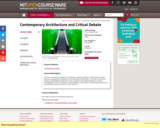
Critical review of works, theories, and polemics in architecture in the aftermath of WWII. Aim is a historical understanding of the period and the development of a meaningful framework to assess contemporary issues in architecture. Special attention paid to historiographic questions of how architects construe the terms of their "present." Required of M.Arch. students.